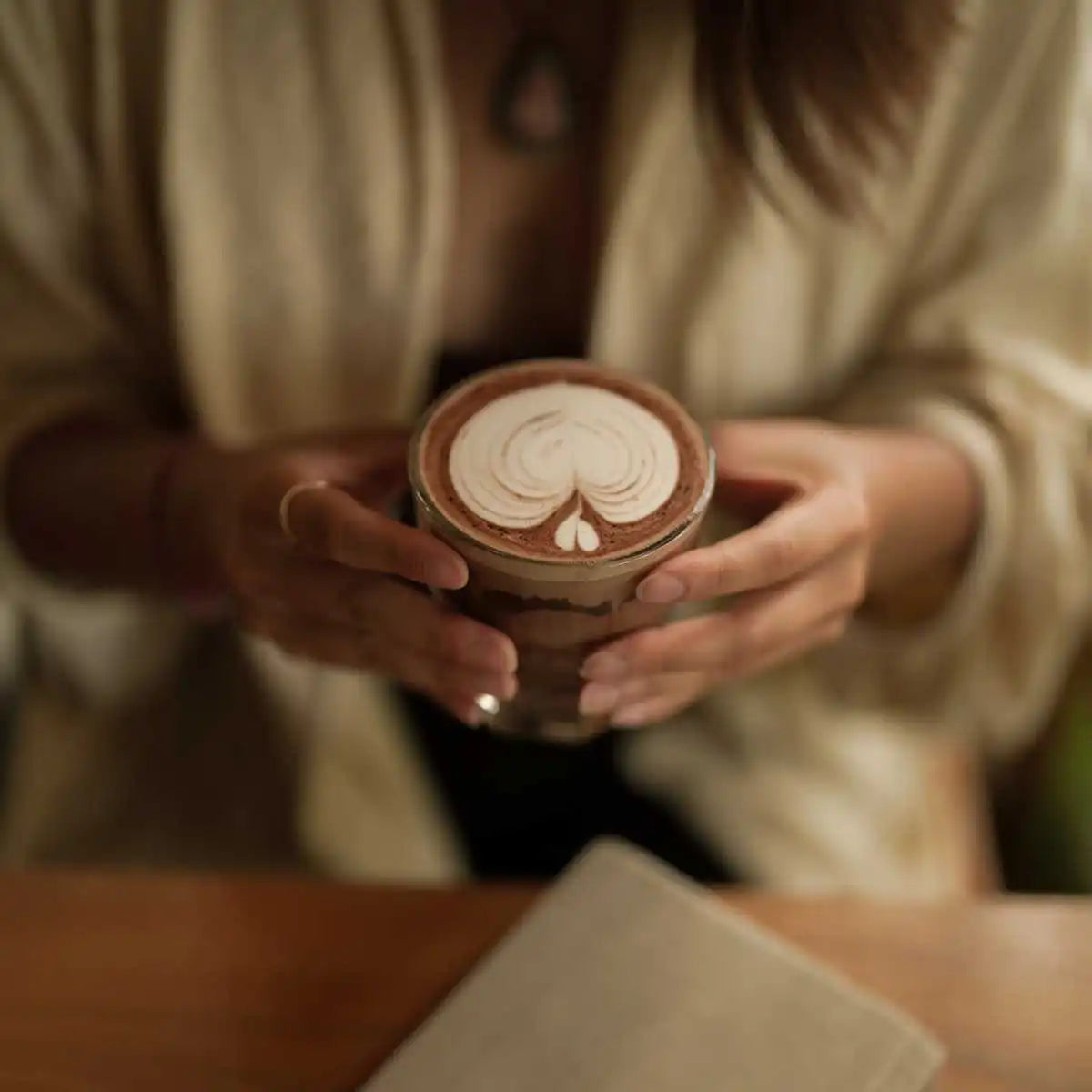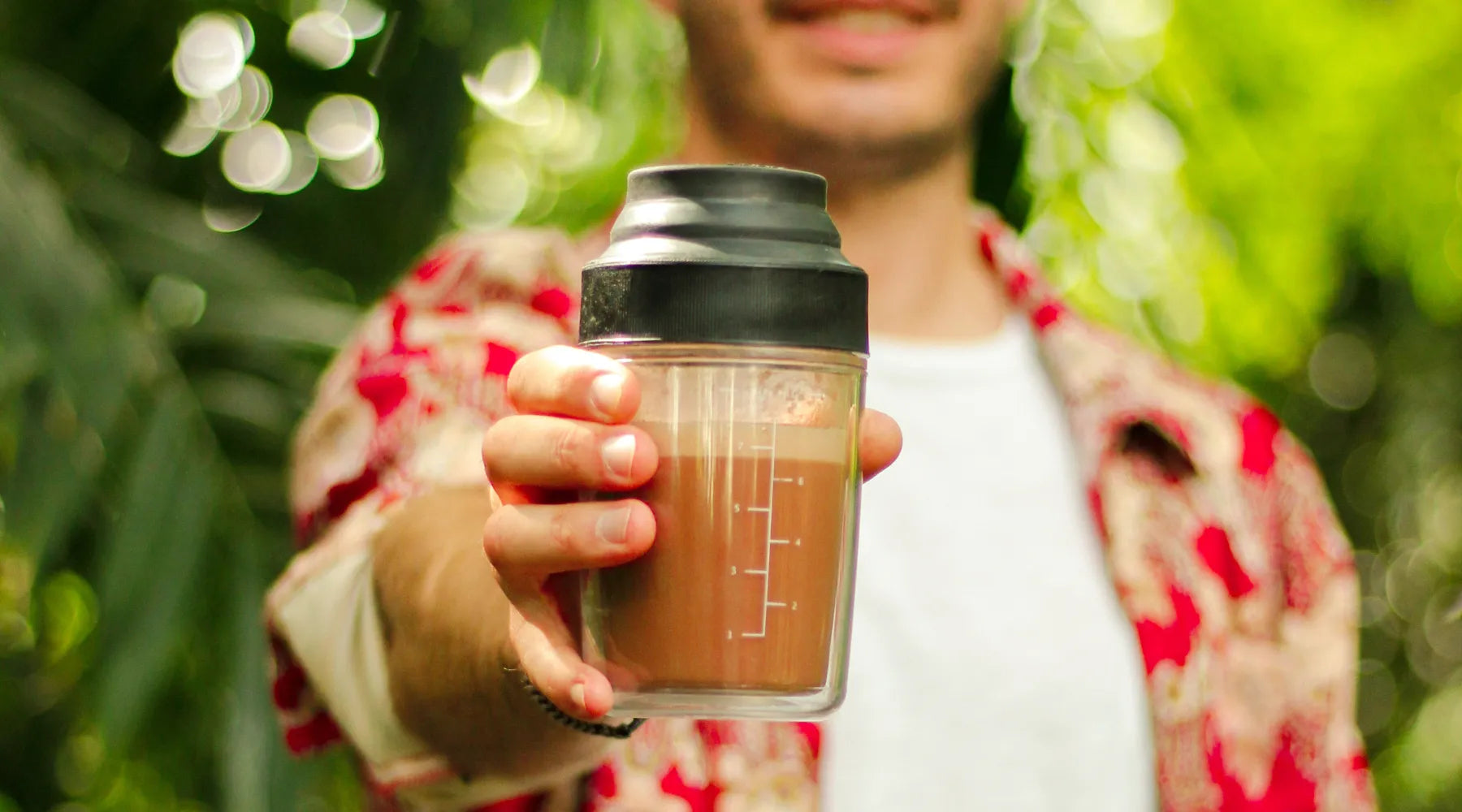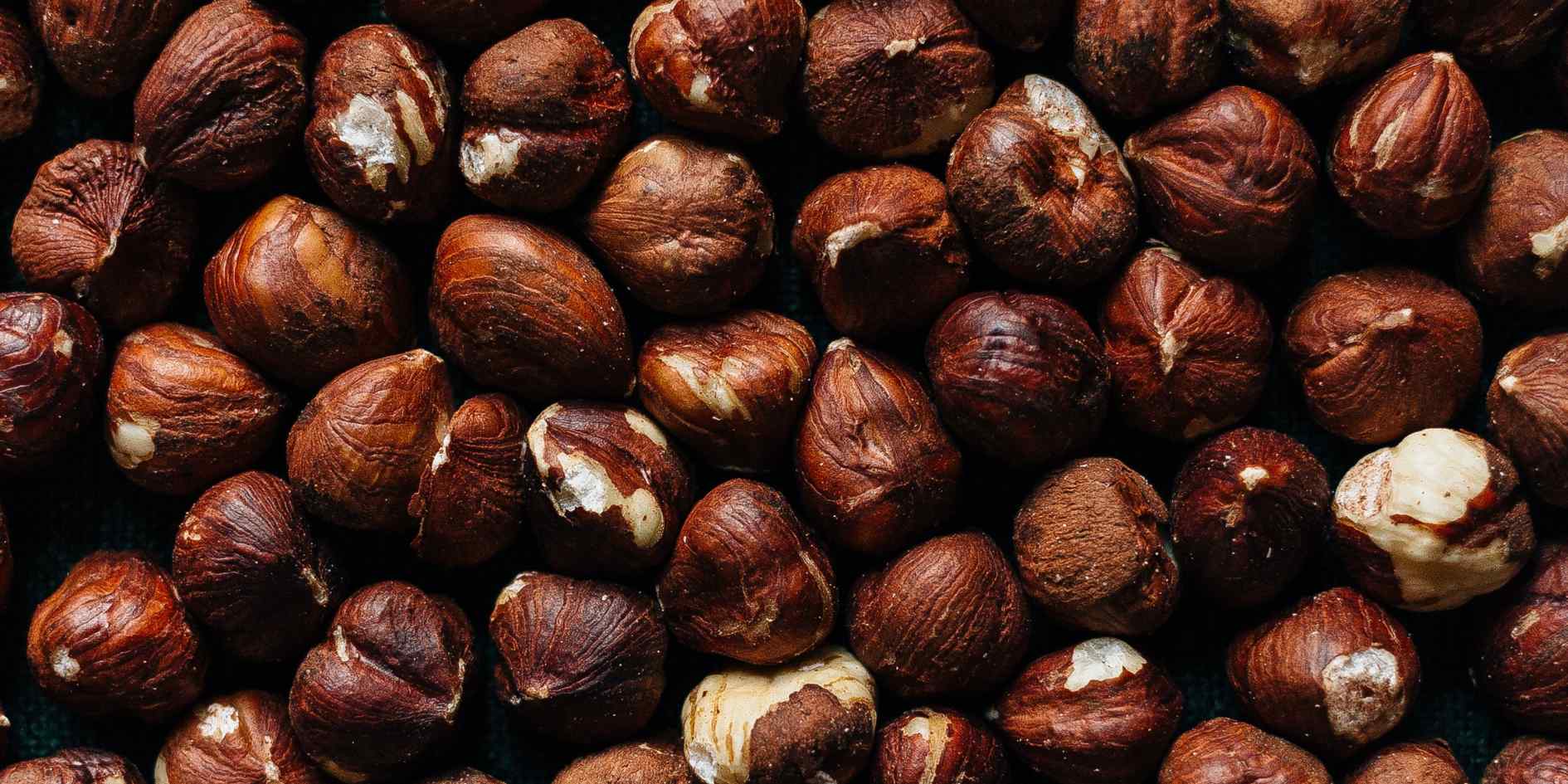Cacao ceremonies are heart-opening rituals that enable a deep connection with yourself and others. The ceremony can be performed in a group or alone and is often combined with elements such as mantra chanting, sound, meditation, journaling or yoga. They are intended to strengthen the mind and body, promote harmony and balance and create a feeling of connection with yourself, others and nature.
Ceremonial cocoa is often used in the ceremonies, which is known for its positive effects on the heart and circulation, as well as the release of happiness hormones. The combination of the natural ingredients of ceremonial cacao and the mindful practices within the ceremony make this event a powerful and transformative experience.
In a cacao ceremony, participants drink a mixture of raw cacao, water and often spices or natural sweeteners. The careful preparation of the cocoa is an important part of the ritual and is often accompanied by an intention or prayer. During the ceremony, various exercises and techniques can be used to increase energy flow and awareness, thus unlocking the full potential of the cacao ceremony.
History of the Cacao Ceremony
The cacao ceremony has its origins in the ancient cultures of South America, particularly the Mayans , Incas and the Olmec culture . They developed this spiritual practice to restore the natural balance between humans and nature and to honor the goddess of the cacao tree – Ixcacao.
The Mayans, one of the region's most prominent peoples, revered cacao as a sacred plant and used the cacao ceremony to express their respect and gratitude for this valuable plant. It was similar with the Incas, who also included cocoa in their rituals and ceremonies.
The Olmec culture, considered one of the oldest Mesoamerican cultures, also played an important role in the development of the cacao ceremony. It is believed that the Olmec created the cacao ceremony to balance the balance between humans and nature and to maintain a harmonious connection with creation. You can find out more about the exciting history of cocoa and chocolate in our blog post here .
Over the centuries, cacao ceremonies have changed and adapted in different cultures, but the basic principles have remained intact. Today, these ceremonies are common in many countries around the world and are used by people to reconnect with nature and their inner self.
Rituals and ceremonies
Cacao ceremonies are spiritual rituals that have their origins in the Inca and Mayan traditions. These shamanic rituals use ceremonial cacao as the main element to open the heart and help you explore your emotions and inner blocks.
If you would like to experience a cacao ceremony, start by preparing your space. Creates a pleasant, calm atmosphere and ensures that you feel comfortable and secure during the ceremony. You can light candles or incense and perhaps play soothing music.
During the ceremony, consciously drink hot cocoa , which is made from raw, untreated raw cocoa. To intensify the effects of cocoa, it can be helpful to focus on your breathing and enter a meditative state. Sometimes mantras are chanted or special breathing exercises are practiced.
The experience of the cacao ceremony is unique and individual for each participant. Some people report increased clarity, deep relaxation, or even spiritual insights. It is important that you go into the ceremony open and curious and give yourself the opportunity to experience your own spiritual journey.
Remember that such rituals and ceremonies are always about personal experiences and beliefs. It is important to approach the process with respect and openness and to find your own path.
Meaning and Intention of the Cacao Ceremony
The cacao ceremony has a deep meaning for those who take part in it. The intention behind this ceremony is to strengthen the connection to yourself and others, expand consciousness and, above all, promote love and connection. While drinking pure cocoa made from high-quality Criollo or Trinitario beans, participants take part in a ritual that has been practiced by indigenous peoples for centuries.
One of the main purposes of the cacao ceremony is to strengthen intuition and creativity by helping the participant look deeper within themselves and release hidden emotions and blockages. Cocoa is said to bring out and release feelings that are often suppressed in everyday life.
The cocoa ceremony is intended to create and strengthen not only personal but also social connections. In the community in which the ceremony takes place, participants can come closer to each other, show an open heart and experience this powerful moment of harmony and balance together.
During the ceremony it is important to listen to yourself and pay attention to your own feelings and reactions. Cocoa can help increase awareness and gain deeper insights into one's self. Such experiences can then be translated into positive changes in one's own life and shared with others.
Overall, the cacao ceremony offers a unique opportunity to balance body and mind, experience true connection and embark on a journey of personal discovery and transformation. The intention to live in love and connection with yourself and others is always at the center of this powerful ritual.
Cocoa ceremony recipe: preparation and ingredients
When preparing a cacao ceremony you will need a few important ingredients. These include raw cocoa , water, plant milk (e.g. oat milk), sugar or coconut blossom sugar and chocolate or cocoa powder. Spices such as chili, cinnamon and a pinch of salt can also be added to enhance the flavor. Cocoa butter can be used to improve the texture of the cocoa.
Start by putting the cocoa powder or crushed cocoa mass in a pot. The crowd depends on the number of people attending the ceremony. First add some water and let the cocoa melt. In the meantime, you can warm the plant milk (like oat milk) without bringing it to the boil. Then slowly pour the warm plant milk into the pot with the melted cocoa and stir everything well.
Now you can sweeten and season your cocoa with sugar or coconut blossom sugar and the spices of your choice. Chili and cinnamon give your cocoa a special note that offers you a unique taste experience. Stir everything well until the sugar and spices have completely dissolved.
For lump-free and delicious cocoa, you can use a chocolate shaker to mix the mixture thoroughly. This will make the texture of the drink even creamier and frothier. Once your cacao is ready, you can pour it into cups and enjoy it in your cacao ceremony.
Remember that there is no set recipe for making cacao in a cacao ceremony. You can customize your ceremony and adapt ingredients or preparation methods to your personal preferences. The most important thing is to feel the connection with yourself and others and to enjoy the moment.
Health effects and benefits & the myth of raw cocoa
Cacao ceremonies have a number of health benefits associated with consuming pure cacao. Cocoa in its pure form contains many important nutrients such as iron, magnesium and zinc . These minerals are essential for the body to maintain various functions and contribute to better health.
Cocoa also contains theobromine, which is responsible for dilating blood vessels and thus increasing oxygen uptake in the body. This improved blood flow can help relieve heart problems and headaches. Cocoa is also rich in antioxidants that fight free radicals in the body and thus contribute to cell protection.
Another important component of pure cacao is the presence of tryptophan and other amino acids, which serve as precursors for neurotransmitters such as serotonin and dopamine. These neurotransmitters have a positive effect on our mood and general well-being. So, by consuming raw cacao during a cacao ceremony, you can improve your mood and reduce stress.
Overall, cacao ceremonies offer a variety of health benefits and can promote overall well-being when attended regularly. While performing such a ceremony, you will not only enjoy the health benefits of pure cacao, but also take part in a profound spiritual experience that can help you open your heart, encourage intuition and creativity, and create a sense of harmony and balance to achieve in your life.
By the way, we generally advise against raw cocoa (more on this here and in the FAQs further down at the end of this article). In contrast to “normal” cocoa, the cocoa beans are not roasted when producing raw cocoa. While roasted cocoa is in no way inferior to raw cocoa when it comes to health aspects, raw cocoa can pose health risks as harmful bacteria may still be in the product due to exposure to both fermentation and roasting, which kill them in the process condition. You can find a great selection of pure, 100%, high-quality chocolates here .
Spiritual aspects
The cacao ceremony is a profound spiritual practice in which participants connect with themselves and nature in a special way. The sacred plant cocoa intensifies the connection to Mother Earth and strengthens the energy of the heart.
Meditation plays a central role in the cacao ceremony. It helps you calm your mind and focus on your inner world. This stimulates your own spirituality and at the same time promotes trust in yourself and the group.
Nature is a significant element of the cacao ceremony. Participants experience a deep connection with the earth and its resources by harnessing the healing powers of this ancient plant. Enjoying cocoa, enriched with selected spices, supports the spiritual process and intensifies the sensations.
In the group you take part in a shared experience characterized by mutual understanding, respect and trust. This connection promotes a sense of belonging and helps you connect on a deeper level with other people and their individual spiritual journeys.
The cacao ceremony offers you the opportunity to expand your awareness of your spirituality and to establish intensive contact with nature and your fellow human beings. By participating in this ritual, people open up to themselves and the environment, develop a greater understanding of their own being, and experience a deeper connection to the spiritual aspects of life.
The role of teachers and the community
In a cacao ceremony, teachers play a crucial role in helping participants open their hearts and find inner peace. They guide the group through the process of meditation and support them by creating a safe, welcoming environment. The teachers are often experienced practitioners of the shamanic ritual and understand the importance of the energy that the cacao releases.
The group that gathers to participate in a cacao ceremony is another important aspect. Each participant brings their own energy and experience to the community. The group supports each other in going through the process of opening and letting go in order to reconnect with their inner soul. This connection and shared experience allows participants to move forward in their personal transformation.
The ceremony itself is heart-opening and stimulating, releasing a special energy that touches participants on a deep level. The alchemy of cacao, combined with the skills of the teachers and group support, helps participants clear energetic blockages and reveal their true selves.
It is important to honor the respect and gratitude towards the teachers and community in the cacao ceremony. Their guidance and support enable participants to open their hearts and enter a space of healing and transformation. Everyone is united on this journey to discover and strengthen their connection to the soul of cacao and their own inner light.
frequently asked Questions
How does a cacao ceremony work?
A cacao ceremony can take different forms depending on who is performing it and what traditions are being followed. Typically the ceremony begins with a cleansing or attunement to create sacred space. The cocoa is then drunk and the participants have time to experience its effects. A cacao ceremony can also include elements such as mantra chanting, sound, meditation, journaling or yoga.
What are the costs for a cacao ceremony?
The cost of a cacao ceremony can vary depending on the type of ceremony, the materials used, or whether a professional leader is conducting the ceremony. However, it is also possible to perform a simple cacao ceremony at home, which is usually less expensive.
Where can you find cocoa ceremonies in Germany?
In Germany, cocoa ceremonies can be found in yoga or meditation centers, at retreats or in private circles. To find a cacao ceremony near you, check online or ask at local yoga or meditation centers.
Do I have to use raw cacao for the ceremony?
A clear no from our side. It's more about using pure, high-quality cocoa, i.e. without any other additives. This is often where the problem begins with many raw cocoa suppliers who use very poor quality cocoa.
Is raw cocoa healthier than “normal” cocoa?
Many advocates swear by the health-promoting effects of raw cocoa. However, this has not been scientifically proven. “Normal”, i.e. roasted, cocoa contains the same health-promoting elements such as antioxidants as well as magnesium, calcium and iron, which are not depleted by roasting.
Raw cocoa, on the other hand, can even pose health risks because harmful bacteria are not killed during the “raw process” (which in particular omits fermantation).
What meditation techniques are used in a cacao ceremony?
The meditation techniques used can vary during a cacao ceremony. The ceremony often begins with a guided meditation or breathing exercises. A silent meditation or guided journey may also take place during the cacao ceremony to help participants delve deeper into their emotions and strengthen the connection to nature and their inner self. With a mindfulness box with recorded meditation, you can host the ceremony from the comfort of your own home.
What utensils are needed for a cacao ceremony?
For a cacao ceremony you usually need the following utensils: ceremonial cacao, a cup or vessel for drinking, hot liquid (water or plant milk) for mixing the cacao, natural sweeteners or spices of your choice, incense or sage for cleansing the room , meditation cushions or blankets to sit on and, if necessary, music or instruments to accompany you.
What makes ritual cocoa different from regular cocoa?
The main difference between ritual cacao and regular cacao is the quality of the cacao beans and the processing. Ceremonial cocoa is obtained from high-quality Criollo or Trinitario beans and consists of pure cocoa mass without additives. However, regular cocoa products, such as those available in stores, can often contain sugar, milk or other additives and may be made from lower quality beans.



